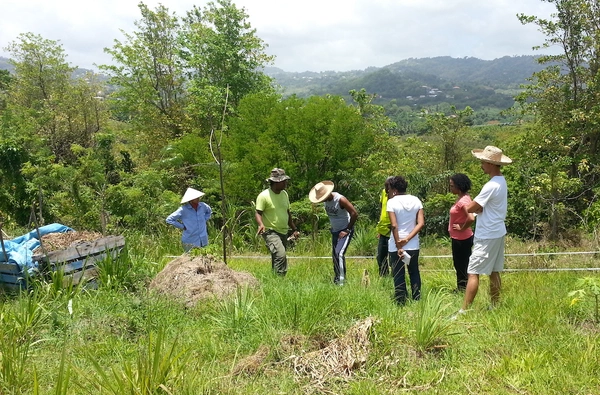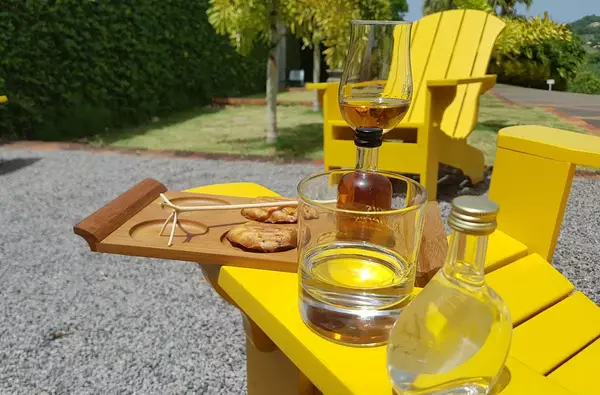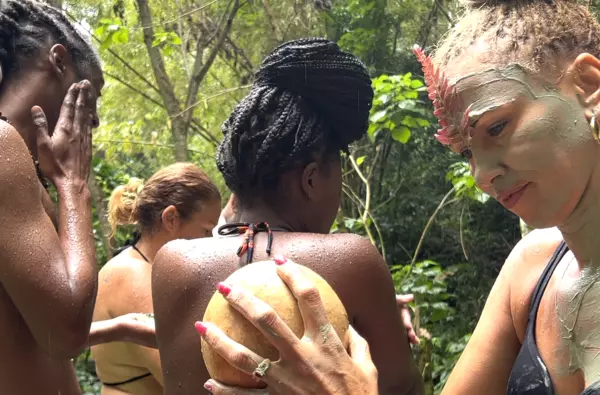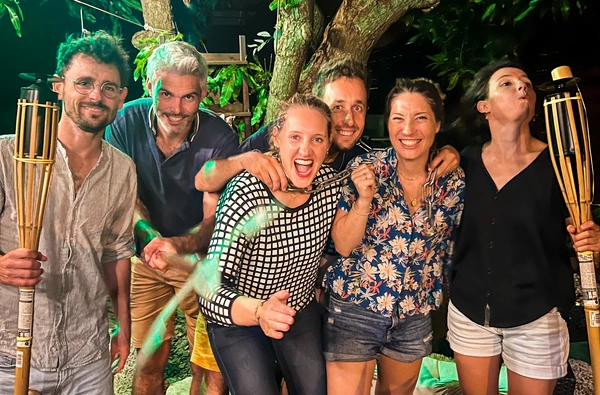
35 €/adulte - lasts 4h
Visiting Martinique means discovering many unsuspected cultural and historical treasures. In addition to its white sandy beaches, the island of flowers has many treasures that you will love. Admire historical buildings, buildings with innovative architecture, discover classified cities.
Martinique has a very rich cultural heritage. There are about a hundred historical monuments spread all over the island and cities classified as heritage sites. As for the numerous rum factories, they are part of the history of the island of flowers. Let's not forget the sugar cane plantations, the banana culture and other tropical fruits, essential to the economy of Martinique, as well as the craft industry.
Visiting Martinique through its cultural activities is the best way to discover its heritage and wealth. These come from different influences: Amerindian, African, European and their interbreeding. You will notice that many heritages are at the base of the Creole culture.
It is the first and most important influence of the island. This link between Africa and Martinique was very much developed by the poet Aimé Césaire. It comes from the slave trade and the arrival of African populations on the island.
This inspiration can be found in the iron work and wood carving. Admire the wrought iron balconies, the carved colonial furniture. Even the magnificent gold jewelry of the Martinique women evokes West Africa. The same goes for the music, the dance, the elegant clothing...
The different populations that passed through Martinique have left their style on the buildings and houses. The huts were first designed like those of the first settlers.
Then the houses change and the style is inspired by Europe. The buildings were equipped with metal architecture, practical to resist the climate of the island. The Schoelcher library and the cathedral of Fort-de-France are magnificent examples.
Martinique has a very rich literary heritage. Many writers and poets have contributed to its international reputation with works on life in Martinique and slavery. Suzanne Dracius, René Maran, Frantz Fanon, Edouard Glissant, Joseph Zobel and many others have left their mark on the island of flowers. The libraries are very numerous and full of works telling the history and culture of the island.
Visiting Martinique and paying tribute to its culture and heritage is a way to honour it. Discover, learn and enjoy all the riches of the island, they are so numerous.
May 8, 1902, is a tragic date in the history of Martinique. Mount Pelée was unleashed and Saint-Pierre was literally buried by the volcano's wrath. The city no longer exists. However, some remains have survived and ruins testify to what is no longer.
Meet the Cyparis train, named after one of the few survivors, whose dungeon can be seen. Discover what remains of the steps of the old theatre, the lodges, the church of the fort, the colonial house... During the eruption, about 40 ships sank. The wrecks are now very popular diving spots.
Learn about 400 years of Martinique's history in the heart of a 3-hectare park in Trois-Îlets. The place is a replica of an Amerindian village, telling the story of the slaves' way of life. 25 traditional huts "show" their way of life before and after the abolition of slavery.
Discover the Cases-Nègres street, as told by Joseph Zobel in his book of the same name, which tells the story of a child slave. You can also learn more about their construction techniques, the materials used and their escape to hide in the forest.
Located in Fort de France, the building is classified as a historical monument. Its magnificent yellow and red mosaic façade, its metal roof and its glass dome bear witness to several influences. These include Byzantine, Egyptian, Art Nouveau and Western classical styles.
Its construction was decided in 1886, after Victor Schoelcher bequeathed nearly 10,000 books to the General Council of Martinique. He was one of the main actors of the abolition of slavery. The building was built in Paris, dismantled and reassembled in Martinique. Unfortunately, the fire that ravaged the island in 1890 saved only 1,200 books. Today, the library has nearly 130,000 works. Visiting it is a cultural activity that will live up to your expectations.
In the heart of Fort de France, the cathedral dates from the end of the 17th century. It was burned, damaged by a tidal wave, almost destroyed by an earthquake, a fire and a cyclone. It was rebuilt in 1895, during major renovations. Today, you can admire a neo-Gothic and Romano-Byzantine style building.
The huge nave is surrounded by stained-glass windows of the time. A magnificent octagonal dome lets in incredible light. Its 25-meter-high spire is covered with thousands of bronze-colored aluminum scales. Some pieces of furniture are visible. Admire a carved wooden pulpit, part of the wrought iron grills around the heart, a marble altar...
The Museum of History and Ethnography is housed in one of the oldest bourgeois mansions dating from the 19th century, in the heart of Fort de France. It is a cultural activity that will take you back in time. Admire period furniture, traditional costumes, paintings and jewelry. Historical documents even retrace certain episodes in the history of Martinique... Immerse yourself in the life of the West Indian notables of the 19th century.
During this cultural activity, you will discover not one, but five markets. Everything is there: meat, fresh fish, seasonal fruit and vegetables, rum and liqueurs... Located under a huge hall, the Grand Marché is mainly dedicated to spices.
Go and meet the local producers and traders, as well as the craftsmen. Stroll the aisles, amidst the neatly arranged stalls and enjoy the atmosphere.
Be intoxicated by the colours, smells, flavours and taste the local specialities on the few food stands. A real treat for the eyes and the taste buds, enough to whet your appetite!
It is a former 17th century sugar factory located in Trois-Îlets. The estate gradually specialized in pottery, producing bricks, tiles and terracotta objects. Today, the village offers a wide range of activities and entertainment for the whole family.
Take part in drawing, painting and jewellery-making workshops. Discover the shops, the wood-fired ovens, meet the ceramists and potters who create their works in front of you...
In Martinique, rum is part of the culture and identity of the island. The producers benefit from the Appellation d'Origine Contrôlée and are particularly proud of it.
You cannot visit Martinique without visiting a rum factory. There is no shortage of choice: Dillon, Depaz, La Mauny... Get to know the mysteries of this know-how so precious on the island. Don't miss a visit to the Habitation Clément.
It is a historical site, the mother house of the famous Clément rum. Located in the heart of the sugar cane plantations, you will learn the steps of rum making. Admire the old installations: distillery machines, gears, steam engines, grinding mills, distillation columns...
Don't forget the wagons that used to transport sugar cane. A cultural activity that will teach you all about this delicious beverage!
When we talk about visiting Martinique, we think of turquoise waters and incredible fauna and flora. However, in order to know and love it, you must also discover its cultural and historical richness which conceals real treasures.
15 activities of type Culture & Art

35 €/adulte - lasts 4h

45 €/adulte - lasts 4h

50 €/adulte - lasts 3h

30 €/joueur - lasts 1h
20 €/adulte - lasts 2h30

250 €/tarif unique - lasts 1h30